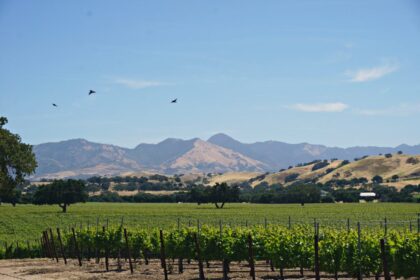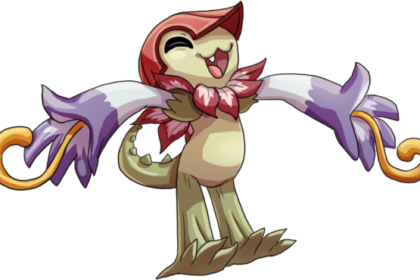Maria Theresa Walburga Amalia Christina was the only female ruler of the Habsburg dominions and the last of the House of Habsburg. She was the sovereign of Austria, Hungary, Croatia, Bohemia, Transylvania, Mantua, Milan, Lodomeria, and Galicia, the Austrian Netherlands and Parma. Take a look below for 30 more fascinating and interesting facts about Maria Theresa.
1. By marriage, she was Duchess of Lorraine, Grand Duchess of Tuscany and Holy Roman Empress.
2. She started her 40 year reign when her father, Emperor Charles VI, died in October 1740.
3. Charles VI paved the way for her accession with the Pragmatic Sanction of 1713 and spent his entire reign securing it.
4. Upon the death of her father, Saxony, Prussia, Bavaria and France all repudiated the sanction they had recognized during his lifetime.
5. Frederick II of Prussia, who became Maria Theresa’s greatest rival for most of her reign, promptly invaded and took the affluent Habsburg province of Silesia in the seven year conflict known as the War of the Austrian Succession.
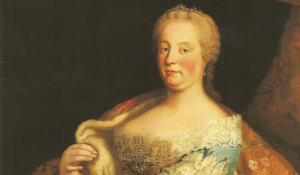
6. Over the course of the war, despite the loss of Silesia and a few minor territories in Italy, Theresa successfully defended her rule over most of the Habsburg Empire.
7. Theresa unsuccessfully tried to reconquer Silesia during the even Years’ War.
8. Theresa and her husband, Francis I, Holy Roman Emperor, had 11 daughters, including the Queen of France, the Queen of Naples and Sicily, the Duchess of Parma, and five sons, including two Holy Roman Emperors, Joseph II and Leopold II.
9. Of the 16 children, 10 survived to adulthood.
10. Though she was expected to cede power to Francis and Joseph, both of whom were officially her co-rulers in Austria and Bohemia, Theresa was the absolute sovereign who ruled with the counsel of her advisers.
11. She criticized and disapproved of many of Joseph’s actions.
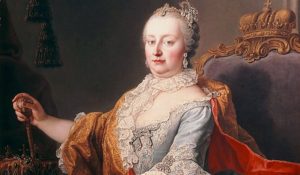
12. Theresa understood the importance of her public persona and was able to simultaneously evoke both esteem and affection from her subjects.
13. Theresa promulgated financial and educational reforms, with the assistance of Count Friedrich Wilhelm von Haugwitz and Gerard van Swieten, promoted commerce and the development of agriculture, and reorganized Austria’s ramshackle military, all of which strengthened Austria’s international standing.
14. She refused to allow religious pluralism and advocated for the state church and contemporary adversary travelers criticized her regime as bigoted and superstitious.
15. The second and eldest surviving child of Holy Roman Emperor Charles VI and Elisabeth Christine of Brunswick-Wolfenbuttel, Archduchess Maria Theresa was born early in the morning of May 13, 1717, at the Hofburg Palace, Vienna, shortly after the death of her elder brother, Archduke Leopold, and was baptized on that same evening.
16. Most descriptions of her baptism stress that the infant was carried ahead of her cousins, Maria Josepha and Maria Amalia, the daughters of Charles VI’s elder brother and predecessor, Joseph I, before the eyes of their mother, Wilhelmine Amalia.
17. Her father was the only surviving male member of the House of Habsburg and hoped for a son who would prevent the extinction of his dynasty and succeed him.
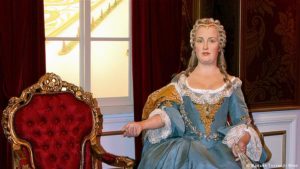
18. The birth of Maria Theresa was a great disappointment to him and the people of Vienna. Charles never managed to overcome this feeling.
19. Theresa was a serious and reserved child who enjoyed singing and archery.
20. She was barred from horse riding by her father, but she would later learn the basics for the sake of her Hungarian coronation ceremony.
21. The imperial family staged opera productions, often conducted by Charles VI, in which she relished participating.
22. Her education was overseen by Jesuits.
23. Contemporaries thought that her Latin was quite good, but in all else, the Jesuits didn’t educate her well.
24. Her spelling and punctuation were unconventional and she lacked the formal manner and speech which had characterized her Habsburg predecessors.

25. Theresa developed a close relationship with Countess Marie Karoline von Fuchs-Mollard, who taught her etiquette.
26. She was educated in drawing, painting, music and dancing – the disciplines which would have prepared her for the role of queen consort.
27. Her father allowed her to attend meetings of the council from the age of 14 but never discussed the affairs of the state with her.
28. It’s unlikely that Theresa ever completely recovered from the smallpox attack in 1767, as 18th century writers asserted.
29. She suffered from shortness of breath, fatigue, cough, distress, necrophobia and insomnia. She later developed edema.
30. She fell sick on November 24, 1780, ostensibly of a chill. Her physician, Dr. Stork, thought that her condition was serious. By November 28, she asked for the last rites, and the next day, at about 9 PM, she died surrounded by her remaining children.


